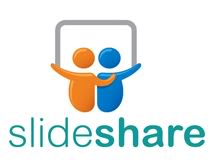04
Mar
Are You Using SlideShare?

Have you heard of SlideShare? Ever tried to use it? I will confess I am not as familiar with it as I maybe should be. So this blog is going to be a bit of exploration for me to.
First of all, what is SlideShare?
SlideShare began with a simple goal: To share knowledge online. Since then, SlideShare has grown to become the world's largest community for sharing presentations and other professional content. You can share the content that matters to you with your colleagues, customers, friends and followers. SlideShare can be embedded into websites and blogs, and are easily shareable on LinkedIn, Twitter, Facebook, and other popular social media platforms. They can be viewed publicly and privately. You can connect with other SlideShare users via comments, "likes," and profile pages (not so different from Facebook).
Now, how can you best use SlideShare so it is reaching your audience most effectively? By following these points when creating a project on SlideShare.
1. Design – Good design gets the attention of the audience and the staff at SlideShare. The audience is much more likely to share the deck, like it, download it and click on it if the design is appealing and impactful.
2. Proper Funnel Expectations – When deciding which offer you want to use to entice viewer engagement, consider the marketing funnel and where your offers reside. Top of the funnel offers, like ebooks, guides and whitepapers, have a much higher probability of receiving click-throughs and conversions. Middle of the funnel offers, like case studies and webinars, will have less engagement. Bottom of the funnel offers, like free assessments and demos, will have the least amount of engagement.
3. Short Tracking URL – To truly understand the engagement metrics around a SlideShare, always include a shortened tracking URL like a bit.ly. The reason is simple: slide decks aren’t consumed solely online. If you or someone in your industry is giving a presentation with your deck in-person or on a webinar, an easy-to-remember URL is ideal.
4. Value Proposition and Relevancy – Ideally, your SlideShare's value proposition will align closely with the message of the deck. It should flow naturally with the presentation and be relevant to it. If the deck is about content marketing, having a content marketing guide or ebook as part of your message will increase the likelihood of engagement.
5. Tangibility – Whenever possible, make an intangible offer appear to be tangible. If you’re promoting an ebook, a graphical representation of an actual book helps make the offer appear to be more tangible, which can impact click-through rates.
6. Button – Having a single button that stands out from the rest of the slide visually communicates a “click me” message, and helps optimize engagement.
7. To QR code or not to QR code – This can be a tough one to decide on. The numbers on results are all over the map as to how effective QR Codes really are. Some Millenials respond well to them, while others ignore them. Have QR Codes run their course? I really don't think so. They are still to popular and helpful to be obsolete as of yet.
Give SlideShare a try. It might work wonders for you and your business. It definitely seems like a great alternative to the typical "PowerPoint" presentation as SlideShare is much more user friendly in the online and digital world.
